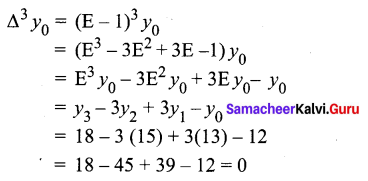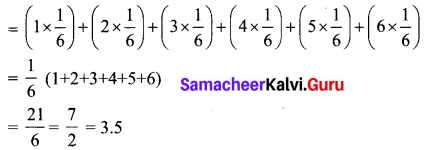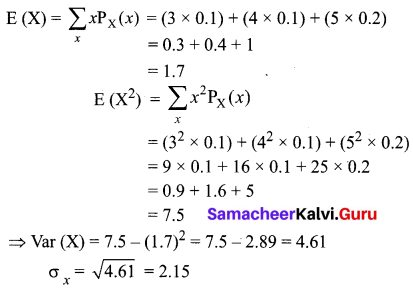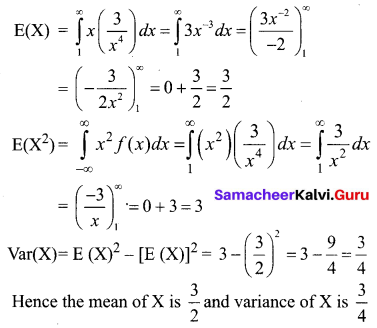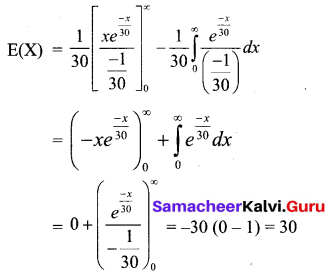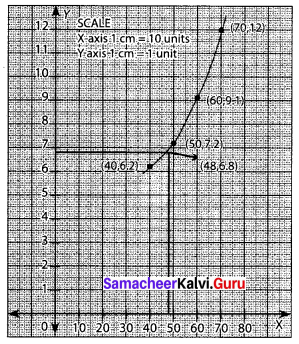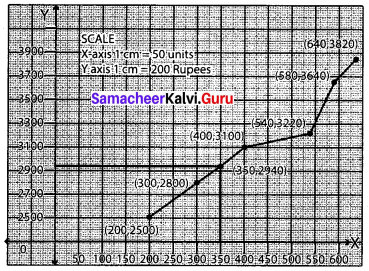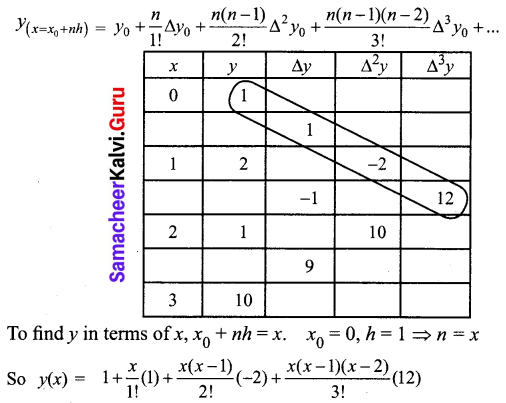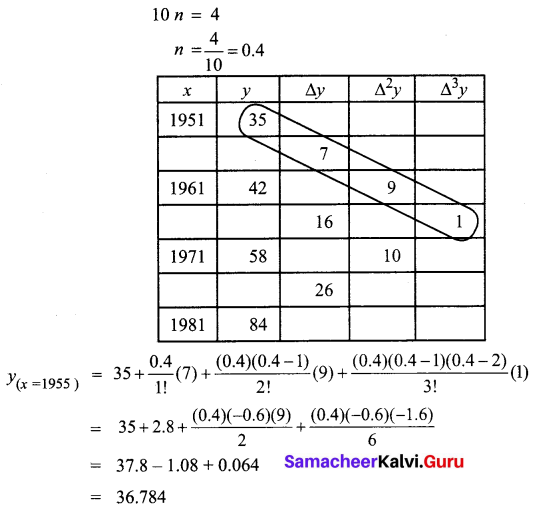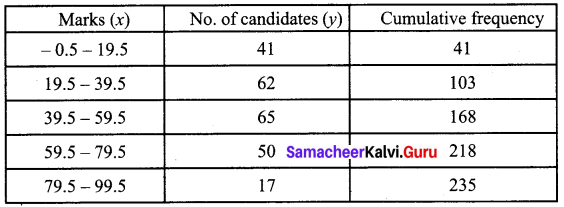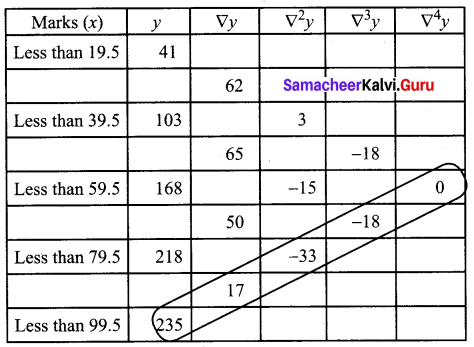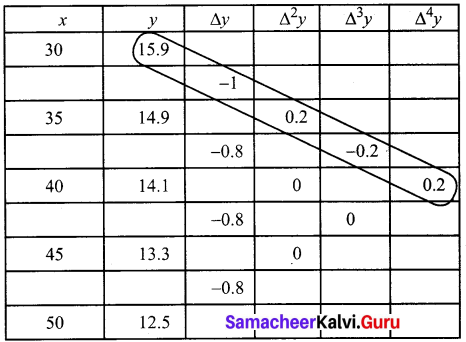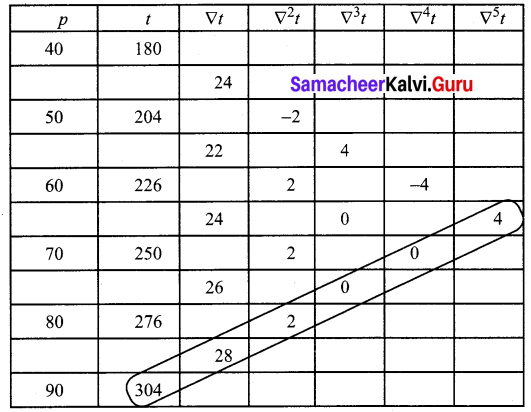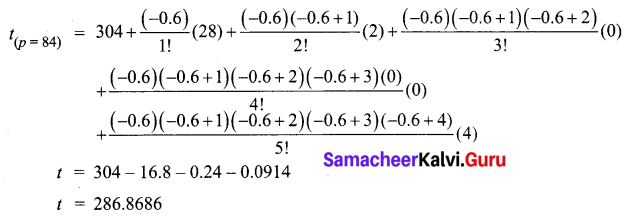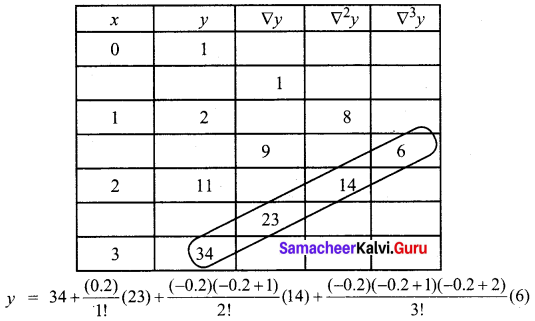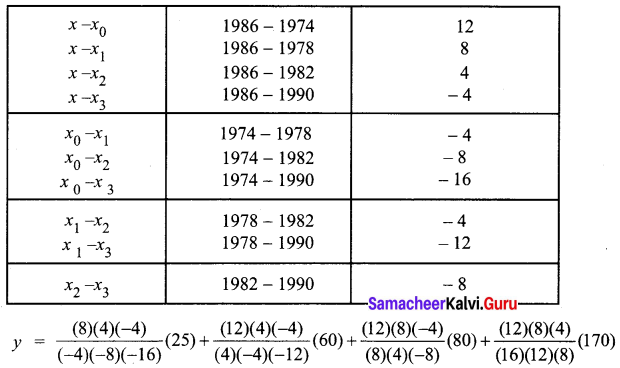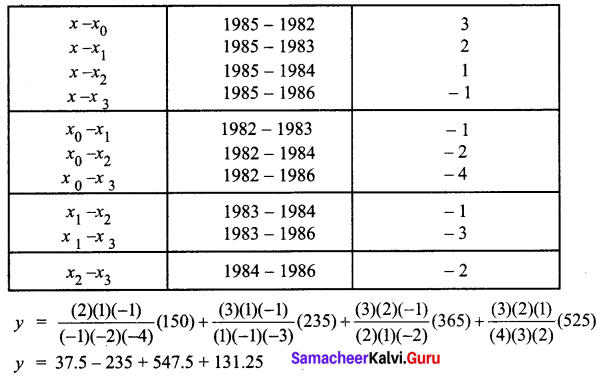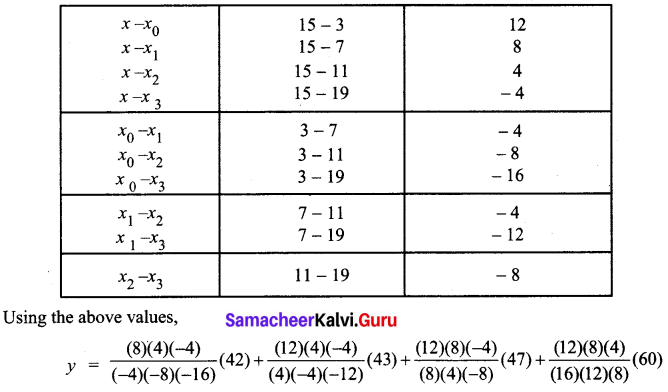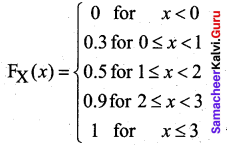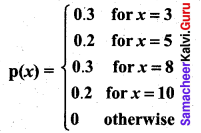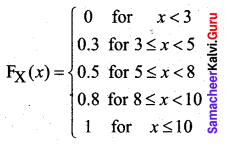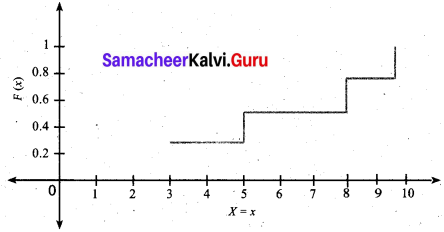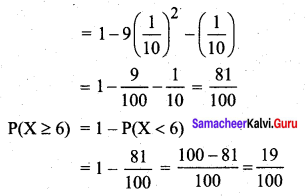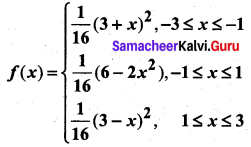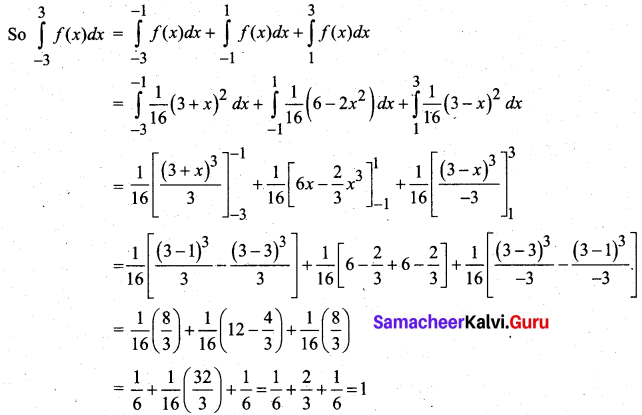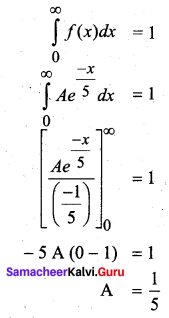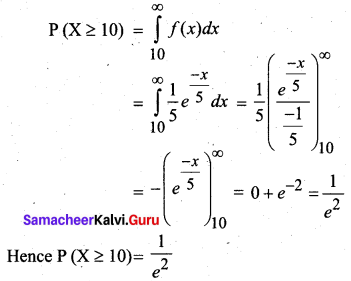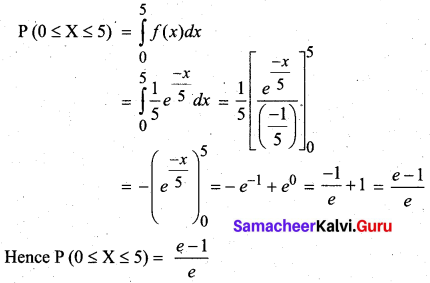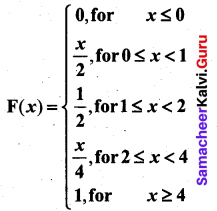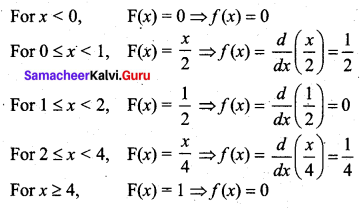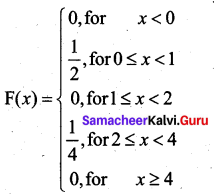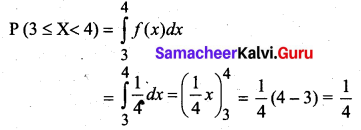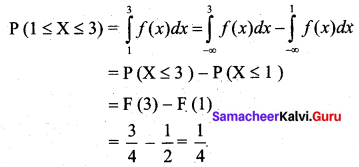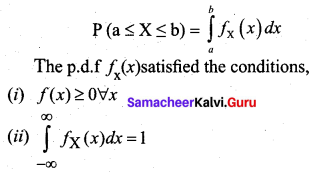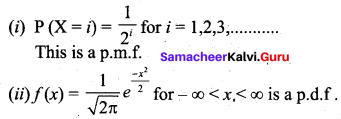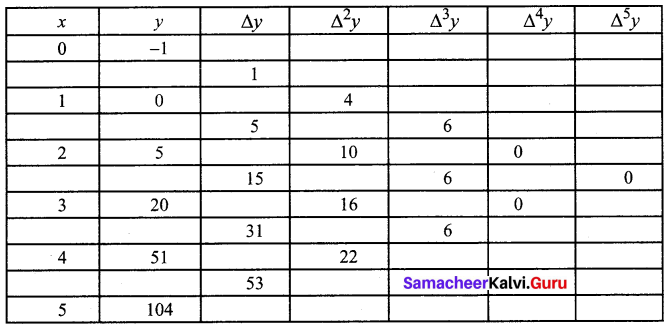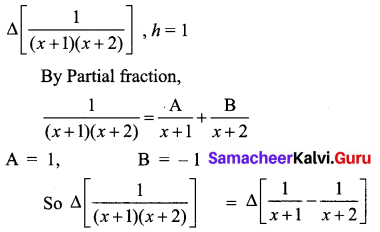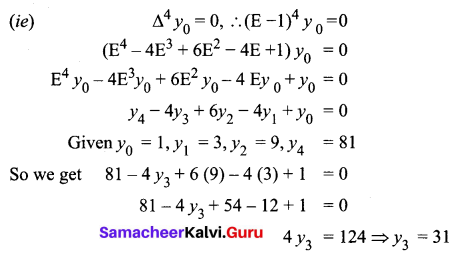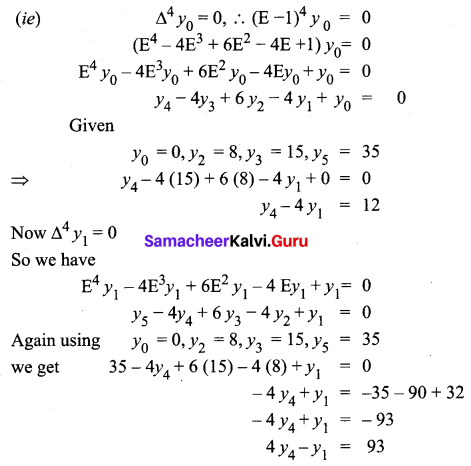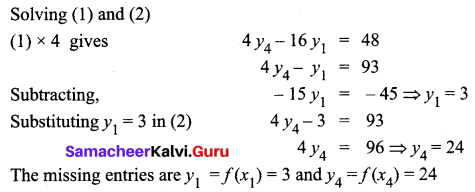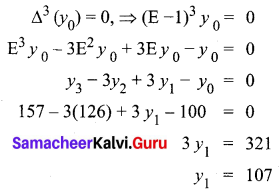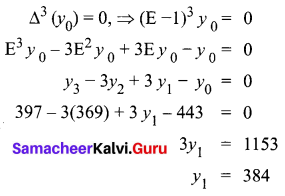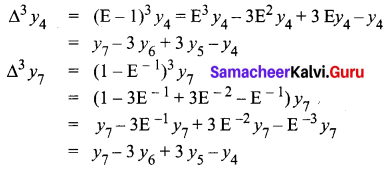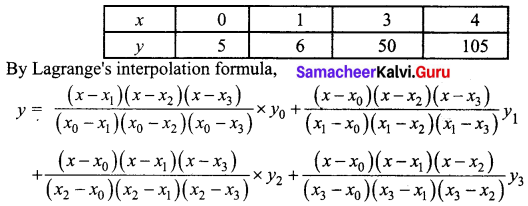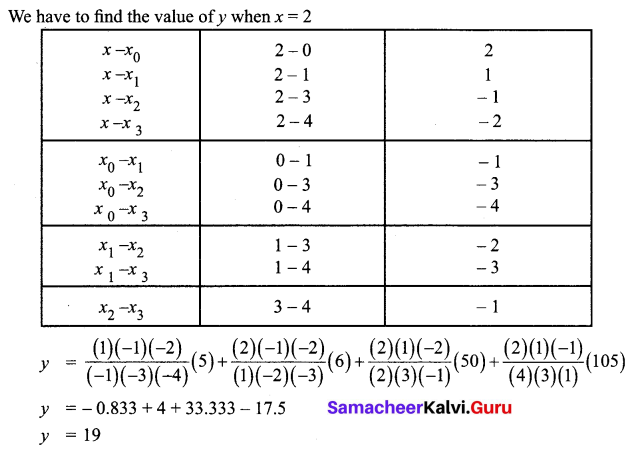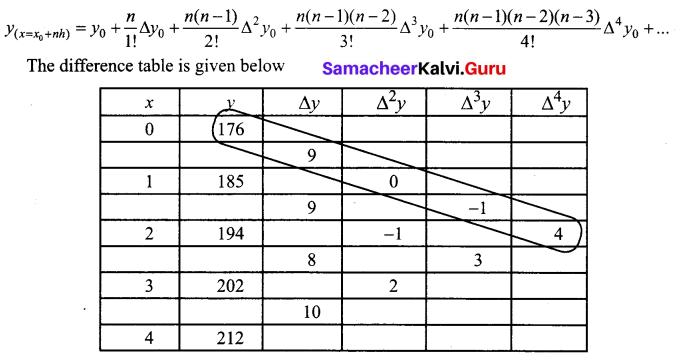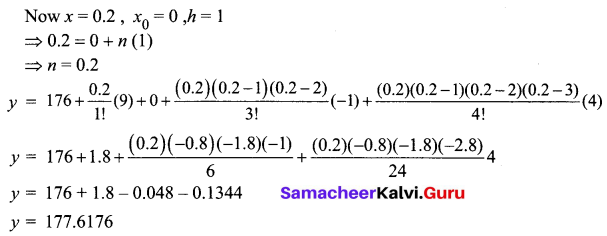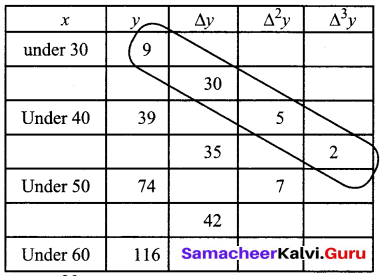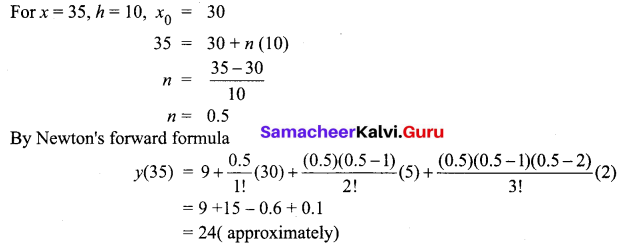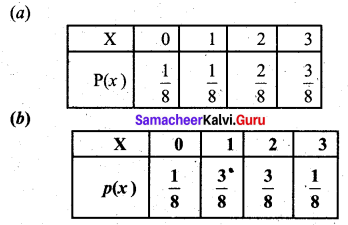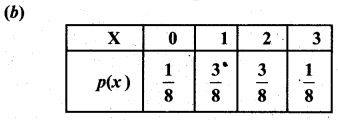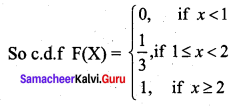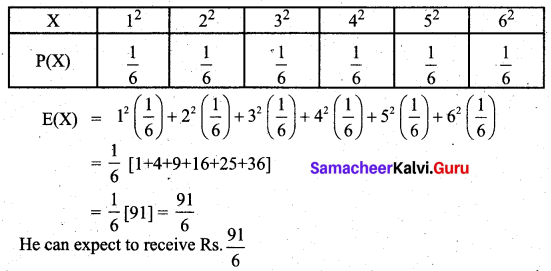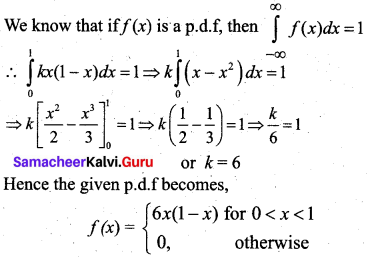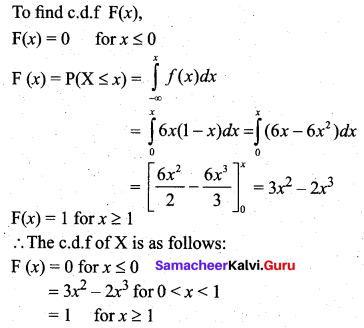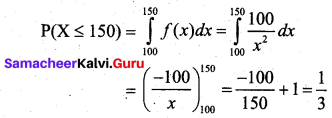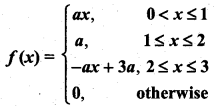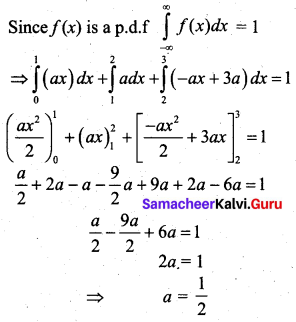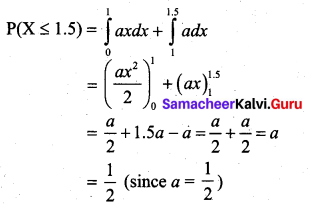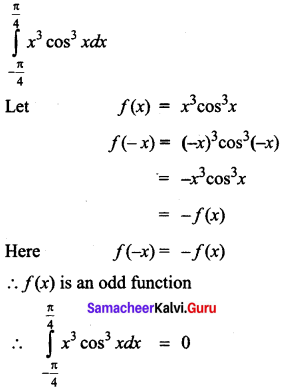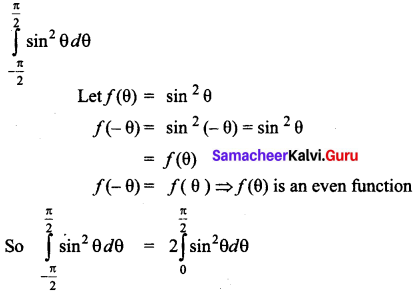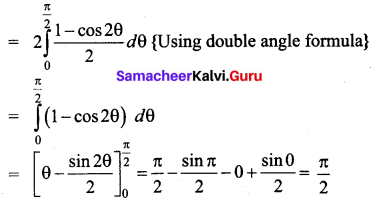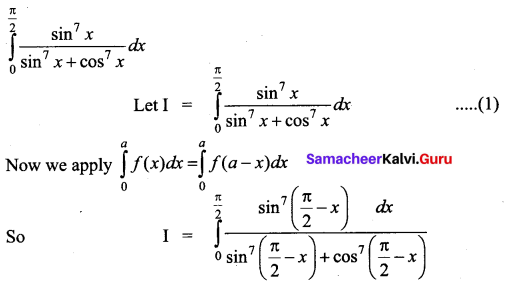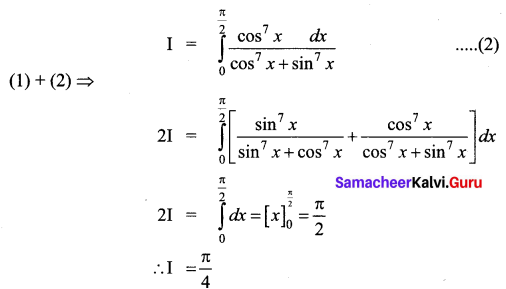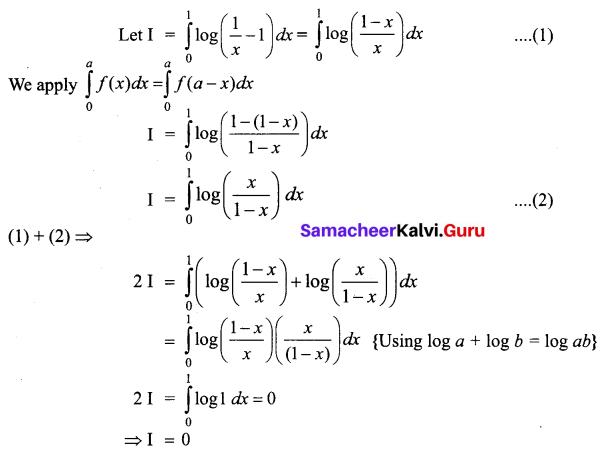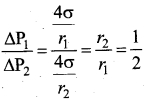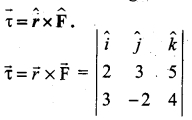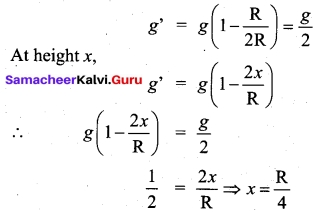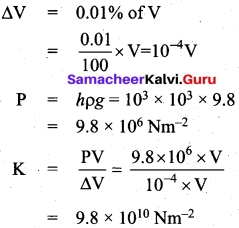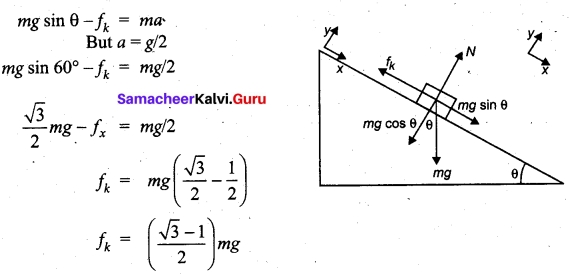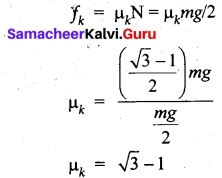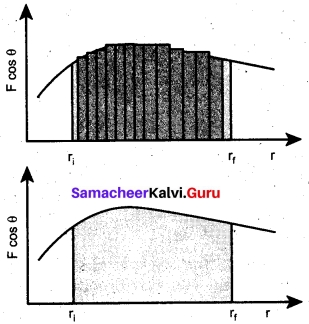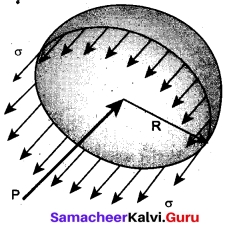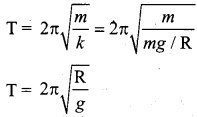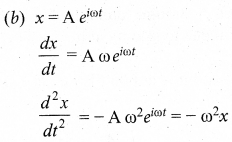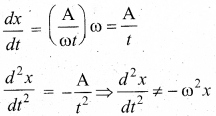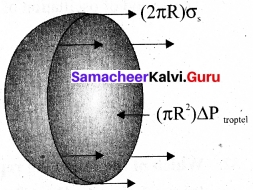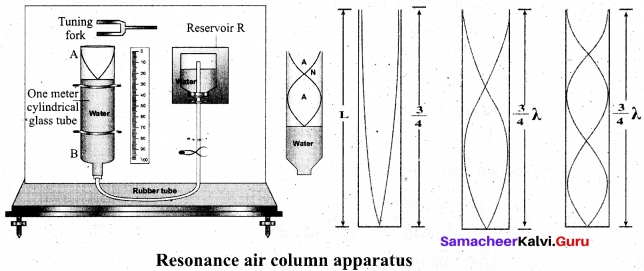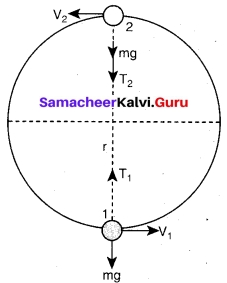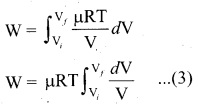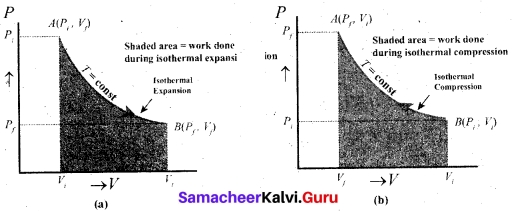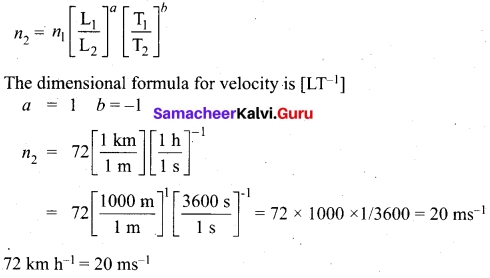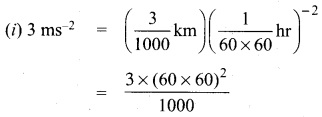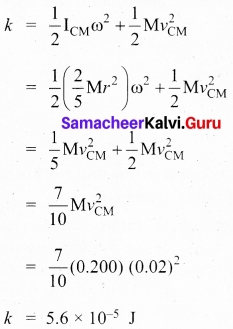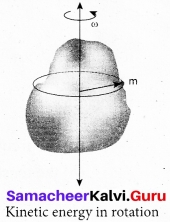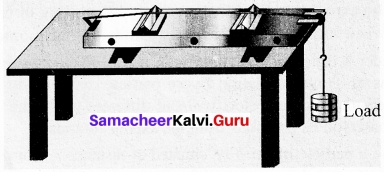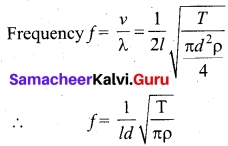Students can download 12th Business Maths Chapter 6 Random Variable and Mathematical Expectation Ex 6.3 Questions and Answers, Samacheer Kalvi 12th Business Maths Book Solutions Guide Pdf helps you to revise the complete Tamilnadu State Board New Syllabus and score more marks in your examinations.
Tamilnadu Samacheer Kalvi 12th Business Maths Solutions Chapter 6 Random Variable and Mathematical Expectation Ex 6.3
Choose the correct answer:
Question 1.
The value which is obtained by multiplying possible values of a random variable with a probability of occurrence and is equal to the weighted average is called ______
(a) Discrete value
(b) Weighted value
(c) Expected value
(d) Cumulative value
Answer:
(c) Expected value
Question 2.
Demand of products per day for three days are 21, 19, 22 units and their respective probabilities are 0.29, 0.40, 0.35. Profit per unit is 0.50 paisa then expected profits for three days are _______
(a) 21, 19, 22
(b) 21.5, 19.5, 22.5
(c) 0.29, 0.40, 0.35
(d) 3.045, 3.8, 3.85
Answer:
(d) 3.045, 3.8, 3.85
Hint:
The expected profit for three days are as follows:
For day 1 ⇒ 21 × 0.29 × 0.5 = 3.045
For day 2 ⇒ 19 × 0.4 × 0.5 = 3.8
For day 3 ⇒ 22 × 0.35 × 0.5 = 3.85
![]()
Question 3.
Probability which explains x is equal to or less than particular value is classified as _______
(a) discrete probability
(b) cumulative probability
(c) marginal probability
(d) continuous probability
Answer:
(b) cumulative probability
Question 4.
Given E(X) = 5 and E(Y) = -2, then E(X – Y) is _______
(a) 3
(b) 5
(c) 7
(d) -2
Answer:
(c) 7
Hint:
E(X – Y) = E(X) – E (Y) = 5 – (-2) = 7 .
![]()
Question 5.
A variable that can assume any possible value between two points is called _______
(a) discrete random variable
(b) continuous random variable
(c) discrete sample space
(d) random variable
Answer:
(b) continuous random variable
Question 6.
A formula or equation used to represent the probability distribution of a continuous random variable is called ______
(a) probability distribution
(b) distribution function
(c) probability density function
(d) mathematical expectation
Answer:
(c) probability density function
![]()
Question 7.
If X is a discrete random variable and p(x) is the probability of X, then the expected value of this random variable is equal to ________
(a) Σ f(x)
(b) Σ[x + f(x)]
(c) Σ f(x) + x
(d) ΣxP(x)
Answer:
(d) ΣxP(x)
Question 8.
Which of the following is not possible in probability distribution?
(a) Σ p(x) ≥ 0
(b) Σ p(x) = 1
(c) Σ xp(x) = 2
(d) p(x) = -0.5
Answer:
(d) p(x) = -0.5
Hint:
p(x) = -0.5 is not possible since the probability cannot be negative.
![]()
Question 9.
If c is a constant, then E(c) is ________
(a) 0
(b) 1
(c) c f(c)
(d) c
Answer:
(d) c
Question 10.
A discrete probability distribution may be represented by ______
(a) table
(b) graph
(c) mathematical equation
(d) all of these
Answer:
(d) all of these
![]()
Question 11.
A probability density function may be represented by ________
(a) table
(b) graph
(c) mathematical equation
(d) both (b) and (c)
Answer:
(d) both (b) and (c)
Question 12.
If c is a constant in a continuous probability distribution, then p(x = c) is always equal to ______
(a) zero
(b) one
(c) negative
(d) does not exist
Answer:
(a) zero
![]()
Question 13.
E[X – E(X)] is equal to ______
(a) E(X)
(b) V[X]
(c) 0
(d) E(X) – X
Answer:
(c) 0
Hint:
E[X – E(X)] = E(X) – E [E(X)] = E(X) – E(X) = 0
Question 14.
E[X – E(X)]2 is ______
(a) E(X)
(b) E(X2)
(c) V(X)
(d) S.D (X)
Answer:
(c) V(X)
Hint:
E[X – E(X)]2 = E[X2 – 2XE(X) + E(X)2]
= E[X2] – 2[E(X)]2 + [E(X)]2
= E[X2] – [E(X)]2
= Var (X)
![]()
Question 15.
If the random variable takes negative values, then the negative values will have ________
(a) positive probabilities
(b) negative probabilities
(c) constant probabilities
(d) difficult to tell
Answer:
(a) positive probabilities
Question 16.
If we have f(x) = 2x, 0 ≤ x ≤ 1, then f(x) is a ________
(a) probability distribution
(b) probability density function
(c) distribution function
(d) continuous random variable
Answer:
(b) probability density function
![]()
Question 17.
A discrete probability function p(x) is always ________
(a) non-negative
(b) negative
(c) one
(d) zero
Answer:
(a) non-negative
Question 18.
In a discrete probability distribution, the sum of all the probabilities is always equal to ______
(a) zero
(b) one
(c) minimum
(d) maximum
Answer:
(b) one
![]()
Question 19.
The expected value of a random variable is equal to its _______
(a) variance
(b) standard deviation
(c) mean
(d) covariance
Answer:
(c) mean
Question 20.
A discrete probability function p(x) is always non-negative and always lies between ________
(a) 0 and ∞
(b) 0 and 1
(c) -1 and +1
(d) -∞ and +∞
Answer:
(b) 0 and 1
![]()
Question 21.
The probability density function p(x) cannot exceed _______
(a) zero
(b) one
(c) mean
(d) infinity
Answer:
(b) one
Question 22.
The height of persons in a country is a random variable of the type ________
(a) discrete random variable
(b) continuous random variable
(c) both (a) and (b)
(d) neither (a) nor (b)
Answer:
(b) continuous random variable
![]()
Question 23.
The distribution function F(x) is equal to ______
(a) P(X = x)
(b) P(X ≤ x)
(c) P(X ≥ x)
(d) all of these
Answer:
(b) P(X ≤ x)



